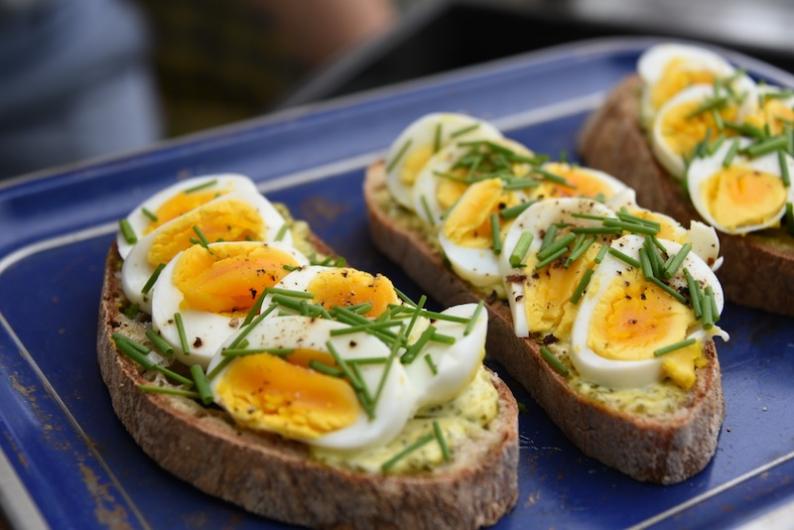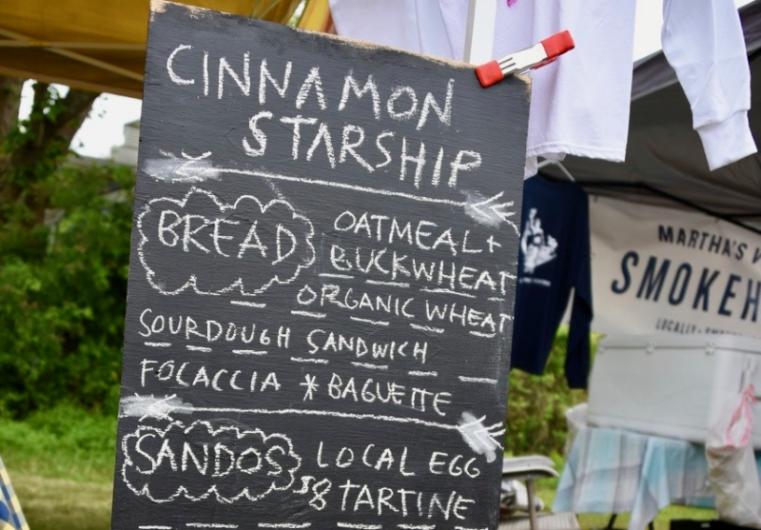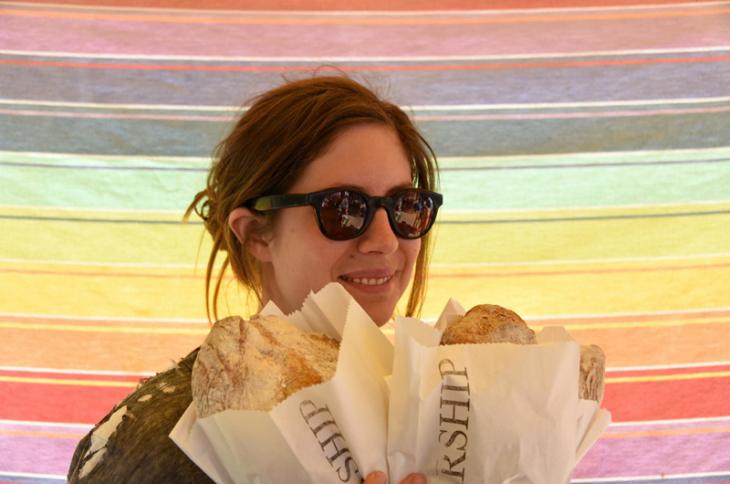It was late winter when the sandwiches started showing up in my Instagram feed.
At first I scrolled past them with a frivolous flick of the finger. I had a vague sense that I was leaving something good behind — like that feeling you get when you’re speeding down Interstate 95 and a billboard screaming “Pepe’s Pizzeria! This Exit!” suddenly looms large and just as quickly fades in your rearview mirror. You keep on going, you’ve got somewhere to be, a ferry to catch.
But the reuben got me at hello. I hit the brakes. The photo was arresting, sure, but the caption practically made me weep with joy: “Sometimes there are moments in life that just scream: TRIUMPH. This is an Island-grown reuben: Blackwater Farm beef, house-made into amazing pastrami, Larder sauerkraut, @thegreybarnchilmark cheese, GOOD Farm duck-egg Russian dressing with Island Grown ketchup oh yah and ISLAND GROWN RYE. West Tisbury gave birth to a sandwich and we are excited!”
Here was the evidence, in one single amazing all-local sandwich, of a decade-plus of hard work and passion by a lot of growers, cooks, eaters and makers on this Island to expand the scope of local eating beyond vegetables to just about everything up and down the food pyramid you can list. I had to meet @cinnamonstarship, the Instagrammer/cook/baker/artist with the chutzpah to put all this together.
So I started hanging around the Larder in Vineyard Haven, hoping to meet Miss Starship, better known as Olivia Pattison. I knew Olivia was renting kitchen space at the Larder to bake galettes and prep her sandwiches for the Farmers’ Market, while still baking her sourdough and local grain breads over at the Scottish Bakehouse in the wee hours of the morning. As Cinnamon Starship (soon to be simply Starship), Olivia has been baking and selling bread for three years, after two summers as the pastry chef at the Beach Plum Inn and two enviable stints as a stage (aka intern) at San Francisco’s Tartine Bakery and Josie Baker Bread.

One day I spied her at the end of a long stainless worktable, zesting a whole lemon directly into a food processor half filled with freshly cracked eggs. I watched her finely mince a thatch of fresh parsley. The processor whirred; she drizzled a fine stream of oil into the lemon and eggs and peered watchfully through her large Starship-esque glasses into the bowl as the herbed mayonnaise began to emulsify.
A big smile crossed my face. I hope no one saw me, but I couldn’t help it. I just thought, “Ah, this girl’s got it.” It being the cooking gene. She’s a natural.
I watched her swirl a caramel in a giant cast iron pan and peel a bowl of apples for a tarte tatin with a ridiculously large chef’s knife.
“Where did you learn to cook?” I blurted out.
No formal training, she let me know right away.
“I hung around my Swedish grandmother a lot. She was a great cook. And my Swedish great-grandmother taught cooking. And my mother is a phenomenal cook. She cooks really informally, so I just learned to be really flexible,” she told me. “I just cooked.”
“Not exactly a slave to recipes then?” I asked her.

“I just think you need to be brave and try things, and if you mess up, you mess up, and it’s just one meal. Then you learn and you know, okay, don’t do that again. I think it’s way more interesting to be creative. Maybe that comes from being an artist.”
Olivia has a degree in printmaking from the University of the Arts in Philadelphia. And she has a Tumblr blog, where she posts an original drawing of an animal every single day — and has for four years. “I draw at night before I go to bed,” she told me. “It’s relaxing.”
But it’s the art of the local sandwich I really wanted to know about. She is clearly fiercely dedicated to using local ingredients. How does she do it?
“A lot of my job in the summer is sourcing. So, so much time to find things to feed people when you’re really committed to using local ingredients. It also takes a certain kind of mental flexibility to look at what you’ve got and figure out how it can all go together.”
“So today,” she told me. “The sandwich I made for the market was unbelievable. It was Mermaid Farm feta with the last of Caitlin [Jones]’s onions from last year that I lacto-fermented, and some pounded green coriander, some Black Water Farm radish and sugar snap peas, some thinly sliced Morning Glory Farm baby kohlrabi, a lemony vinaigrette, and local greens on sourdough focaccia. And it was so good. But I don’t think anybody would have said, oh yeah, a kohlrabi and feta sandwich, yum. But it was really good.”
I began to think of Olivia as one part scientist, one part artist and one part motivated citizen of the world. Because as much as the creative process stimulates her (working with wild cultures she describes as like voodoo magic), she cares deeply about our food system and what we’re eating. When I asked her why she prefers baking entirely with a sourdough starter, she tells me it’s healthier, the slow rise breaks down some of the gluten, and bread is ultimately more digestible.
“It’s like we’ve forgotten everything we know about food. Which is why everyone is sick now. I’m just trying to take it back. I have a feeling that if you can fix the food system in this country you can fix a lot more of the problems,” she said.
By this time, I had followed her all the way to her gig at the West Tisbury Farmers’ Market, and as I took a big bite out of a strawberry rhubarb galette, I have to agree. (A galette made with strawberries, by the way, that she alone managed to extract from the wholesale manager at Morning Glory Farm, while the rest of the Island waited for the supply to restock.)
I watched her charm her customers, quickly do the math, take in the dollars, and hand over her local egg tartines, slices of honey pie and loaves of oatmeal buckwheat sandwich bread in one fluid motion. Customers stand right there and take a bite out of the treats, satisfaction from the robust flavors spreading across their faces instantly. Eaters are happy, the cook — and the growers — are fairly paid for their goods, and the nutritional value of a fresh egg tartine or a fresh fruit tart with whole grain crust isn’t even measurable against the best fast-food breakfast. Perhaps an oversimplification on my part, but for Olivia Pattison, the all-local sandwich (or bread or tart) isn’t just a puzzle, it’s a solution.
Recipe for egg tartine with homemade lemon-herb mayonnaise.







